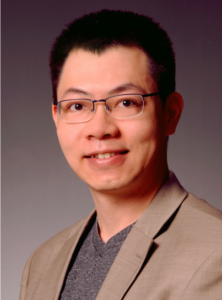Yu-Chieh Wang, PhD
Assistant Professor of Pharmaceutical Sciences 
Education & Experience:
I received my bachelor’s degree in biology from National Taiwan Normal University (Taipei, Taiwan) and my doctoral degree in medicinal chemistry and pharmacognosy from the Ohio State University (OSU; Columbus, OH). My research at OSU was focused on experimental therapeutics for human cancer and the regulation of kinase signaling using novel small molecules. Prior to joining UNTHSC, I was a Senior Research Associate at the Scripps Research Institute (TSRI; La Jolla, CA) and led several studies at the interface between cancer and stem cell biology to understand the molecular regulation of cellular pluripotency. In addition, I was involved in the California Institute for Regenerative Medicine (CIRM) Bridges to Stem Cell Research Program as a mentor for graduate and undergraduate students.
Teaching Areas & Interests:
I am experienced in graduate and postdoctoral education in molecular biology, regenerative medicine, and their applications in the development of novel therapy. I am also involved in teaching the Pharm.D. program. For research mentoring, I am leading a highly motivated group and seeking to provide innovative solutions for challenges in disease-oriented research. I have successfully trained several undergraduate and graduate students and interacted with numerous postdoctoral fellows.
Professional Activities & Awards:
I am a member of several professional societies that include the American Association for Cancer Research, American Society of Clinical Oncology, American Chemical Society, Society for Glycobiology, and International Society for Stem Cell Research (ISSCR). I am serving as an editorial board member and a handling editor for Scientific Reports in areas of stem cells & development and chemical biology. Also, I have served as an advisory board member of the GTC Stem Cell Summits and been invited as a speaker in the panel discussion on Selecting a Mentor sponsored by Elsevier B.V., the ISSCR annual meeting, the GTC Stem Cell Summit, and special seminars for several academic institutions. The awards and honors that I have received include: TSRI Society of Fellows Postdoctoral Travel Award, ISSCR Travel Grant, Marie Mayer Fellowship (Marie & Jimmy Mayer Award for Melanoma Research), NIH National Graduate Student Research Festival Travel Grant, and Award for Outstanding Student Research (twice, Department of Biology, National Taiwan Normal University).
Scholarly Interests:
The overall goals of my research program are to understand the molecular basis of normal and pathogenic development in human cells, and to develop better therapeutic and diagnostic strategies for managing human disease including congenital disorders and cancer. Human pluripotent stem cells (hPSCs) which possess cellular pluripotency are a group of remarkable cells that provide a great promise of success in regenerative medicine and the development of novel therapy. Our group has conducted several exciting studies sought to address critical issues in stem cell biology and translational medicine. These efforts resulted in significant reports regarding: 1) the discovery and utilization of glycomic signatures and pluripotency-associated lectins for identifying human pluripotent stem cells (hPSCs; highlight article, Cell Research), 2) transcriptomic analysis of circulating melanoma cells using a mRNA sequencing platform with single-cell resolution (Nature Biotechnology), 3) reprogramming of somatic cells from endangered animal species (cover story, Nature Methods), 4) genome-wide analysis of epigenetic variations in human pluripotent stem cells and their differentiated derivatives (Cell Stem Cell), 5) efficient derivation of functional melanocytes from transgene-free human induced pluripotent stem cells (hiPSCs) as a potential platform to study human melanocyte-associated disease (Journal of Investigative Dermatology), 6) the role of a glycosyltransferase ST6GAL1 in the regulation of cellular pluripotency (Scientific Reports), 7) the identification of pluripotency-associated inorganic elements in hPSCs (Scientific Reports), and 8) the identification of NGLY1 as a novel target for anti-melanoma treatment (British Journal of Cancer). With this foundation, we are actively working on using hPSC-based platforms to recapitulate the normal and pathogenic development of melanocytes for studying dysregulation and heterogeneity of cell signaling involved in melanoma formation. In addition, we are highly interested in understanding how protein glycosylation states contribute to the mechanisms of pluripotency regulation and pathogenesis.

Social media